This time, we'll be talking about the Oraimo Smartwatch Oraimo tempo W2 OSW 20. First, you get the box, which is not an unboxing because this is an item that we have been using for a few months, and then you get a welcome guide and the watch itself.
you can also get this charger, or, more precisely, the cable, because you must have your own charger head. You can use the charging head from your smartphone approx. This is what you got from the Oraimo Smartwatch, gentlemen.
Benefits and drawbacks Oraimo Tempo W2 smartwatch
Let's move on to the next section, pros and cons, what I like about this smartwatch, the first one is the design, guys, the design is macho, so for those of you guys, I'm sure you'll like this kind of design.
Because I dislike the design of major mobile phone companies' smartwatches, such as Apple's. This smartwatch design is good Samsung has a smartwatch like this for its own pricelist in the online marketplace; the price range is 700-800 thousand, guys, so that's plenty affordable.
Oraimo Tempo W2 smart watch has the following features:
If it meets your needs, you can purchase a second smartwatch. I've had a Casio watch but not a G-shock, and the rubber wrist band broke after a few years of use, which surprised me as well. Guys, I believe the rubber is still very good; it appears to be wet.
I've been using it for a few months, and it's really sturdy, the feeling is, and it's comfortable to use, then from these features, guys, for this price, what you actually get.
"Also read: How To Clean Your AirPods?"
Is the waterproofing of the Oraimo Tempo W2 smart watch guaranteed?
I think it's quite unique; it's IP67, waterproof, not just splashproof, and it has a heart rate monitor with 24 training modes.
There is active step tracking, music control, stopwatch, notification, touch screen, count calories, count steps, and so far as I use it, the information that is quite useful is the heart rate monitor and step tracker.
If you want to walk 10,000 steps per day as a target, this smartwatch can easily monitor it, you can also see your heart rate constantly.
So if your heart has an abnormality, you can tell right away; it's a useful basic function in my opinion. I'm also quite used to finding out what my heart rate is.
The other pros are the battery life, which is amazing, as it can last almost a week on a single charge, and why is the charger cable shaped like this, because this watch is IP67. So it has to be installed like this to be charged and then plugged into your charger head.
The cons are that this Oraimo brand has its own apps, so it's not a native app that's integrated with OS like Apple's Smartwatch or Google's own smartwatch that will be introduced. The Oraimo Tempo W2 smart watch has its own apps, but it cannot be automatically connected and synced with your imac, iPhone, or Galaxy smartphone, which is one of the main drawbacks.
The next drawback that I regret the most is that it is very easy to wake up this clock display, with just a touch. If you ride a motorcycle while wearing a jacket, this clock will easily turn on itself.
I once checked this clock display after driving a motorcycle and discovered that it can change itself, that if the homescreen click and hold will enter layout change mode, and that upon contact with the surface of my jacket, this watch appears to go into that mode and can be shifted to another type of layout.
"Also read: How to Clean your Apple Watch?"
I was perplexed as to why the clock layout could change on its own; all of this is possible because this clock lacks a screen lock button, causing the screen to remain off if accidentally touched.
Let's move on to the next section, which is tips and tricks. To be honest, I don't have any tips for using this watch because it's so simple; the only thing I can say about the layout options is that not all of them display the information that you need.
I chose this layout because it is the most detailed in appearance, with a battery indicator, a heart rate indicator, step tracking, date, and also temperature and weather.
There are also layouts like the one I will show for those of you who want a Chronograph style, such as This layout is also quite complete, with a step tracker, heart beat, weather, date, and battery indicator.
Other layouts, such as the one I've shown below, lack date information, so not all layouts are useful. You must decide which layout is most useful for you.
The app contains a plethora of layout options that can be downloaded. There are factory default layouts as well as additional layouts from applications that can be downloaded and transferred to this watch; the process is lengthy but not inconvenient.
Then we move on to the ownership experience section, where I decided to buy a watch not because I needed a smartwatch, but because my Casio watch strap housing broke and couldn't be repaired, and my real needs are just an ordinary digital watch.
Actually, I do not intend to purchase a smartwatch because I do not believe I require one, but because this product fulfills all of my requirements, I finally decided to purchase this smartwatch at a reasonable price. I also like the design, it can glow in the dark, and the battery lasts long enough.
To be honest, I don't use a lot of the functions of this watch, such as training mode, and the main advantages even when compared to Apple or Samsung Smartwatches, which have only two or three days of battery life, so I don't like it because it has to be charged frequently.
This watch only needs to be charged once a week so I can still tolerate enough smartphones that I have to charge every day the battery life factor and IP67 is what makes the most I'm interested guys and I can still accept the shortcomings.
We've arrived at a conclusion, guys; if you require an integrated one with IOS or Android, Oraimo Tempo W-2 is definitely not recommended for those of you whose needs are roughly similar to mine.
Oraimo Tempo W2 smart watch could be a pretty interesting choice because of the low price and the one-year warranty; honestly, I had never heard of the brand oraimo before this time. However, because of these factors and the high value for money, I finally decided to purchase Oraimo Tempo W2 smart watch.
Samsung Galaxy Watch 4 review
There hasn't been a truly great smartwatch for you in years. However, Samsung and Google have now teamed up to create Wear OS 3 and the Galaxy Watch 4.
The moment we've all been waiting for has finally arrived. It also has a slew of new health features. We may soon have a smartwatch that I would recommend to any Android user.
This may be Google's operating system, but it is unmistakably a Samsung watch. It's great, but only if you live a Samsung life. Anyway, let's go over this again. These things, in fact, because there are two models, the Galaxy Watch 4 and the Galaxy Watch 4 Classic.
If you haven't heard, Samsung has agreed to abandon Tizen OS in favor of Wear OS for its smartwatches. However, Samsung is now contributing to Wear OS, such as watch faces and, you know, actually good hardware with actually fast processors.
"Also read: Carbinox Smart watch Fitness Tracker for iphone"
That is, it is a Wear OS watch, but it does not have many of the issues that Wear OS or Tizen have. As a result, it is faster than any Wear OS watch and has better app support than any Tizen watch. It has Google Maps, for example.
Features of the Galaxy Watch 4
More third-party app support is on the way now that Google and Samsung appear to be working together to make watches a reality for Android users.
In terms of prices and sizing, there is a lot to keep track of. The basic Galaxy Watch 4 starts at $249 for this little 40-millimeter model.
You can pay more for a 44-millimeter model. The Watch 4 Classic starts at $349 for slightly nicer hardware, and that's a 42-millimeter model, or you can get a 46-millimeter model, and you can also get LTE on either one.
Bottom line, they're really not overpriced for what they offer. The hardware is good. It's not quite to Apple Watch levels of fit and finish, but I like having round watch faces, and I like that you can use any 20-millimeter strap.
The regular Galaxy Watch 4 has a touch-sensitive bezel that you can use to scroll around and it's, fine. But the Galaxy Watch Classic has a physical rotating bezel with little clicks on it.
That's just so much nicer than swiping around on the watch face. Google and Samsung have also figured out a pretty good core user interface.
You swipe up for apps, right for notifications, down for quick settings, and left for tiles, and you can customize all of these tiles for the things that matter to you, so you don't have to cram every complication you want onto the main watch face.
The defaults on the Galaxy Watch are far superior to those on, say, Fossil smartwatches. If you want, you can also get a slew of custom watch faces. The battery life is adequate.
I decided to put the toughest one to the test, so I used the smallest watch, and I was able to turn on the always-on screen, do some GPS track workouts, receive a ton of notifications because everyone does, and still have enough battery to track my sleep that night before having to charge it in the morning.
If you use it sparingly, you might be able to get two days out of it. It doesn't have a long battery life, but it's adequate. Bottom line, for the first time in a long time, we have a solid foundation on which to build a credible smartwatch for Android users, and only Android users, by the way.
This will not work with an iPhone, unlike older watches. However, a foundation is not a complete house, and the software on the Galaxy Watch 4 is the house that Samsung built. The majority of the apps that come pre-installed on this watch are Samsung apps. And, just like on Samsung phones, some of them can be replaced with Google content, while others simply cannot.
The buttons on this watch are hard-coded to work with Samsung Pay and Bixby, and you know, Bixby is getting better to the point where it's nearly as good as Siri was three years ago.
So, not so good. Look at it. If this is any indication, it cannot yet set multiple alarms. This watch can now be used with any Android phone, not just Galaxy phones.
However, in order to use it, you must first install Samsung's wearable app on your phone, followed by the Galaxy Watch plugin.
Then, if you want to use Bixby, you must first sign in to your Samsung account. Then, if you want to use Samsung Pay to pay for things, you must first install it on your phone.
If you want to use the advance, do so.Then, if you want to use the advanced health features, you'll need to install Samsung Health. I simply do not believe it is a good option for anyone who does not already own a Samsung Galaxy phone. If you do happen to live in Samsung's house, you'll notice that the home gym has received a significant upgrade.
"Also read: TOP 5 Rugged and Waterproof Smart Watches in 2022"
The Galaxy Watch 4 includes all of the standard health features. It can count steps, track exercise for 95 different types of workouts, use GPS, and so on.
It also has an ECG for checking for Afib and, like the Apple Watch, can measure blood oxygen levels. Samsung uses this to help with its sleep tracking feature, which can also use a phone to listen for snoring and then sync all of that data together.
It has a bioelectric impedance sensor, which allows you to measure body composition statistics such as body fat percentage, or skeletal muscle mass, and so on. I believe that in the right context, all of these health features are beneficial, but that context is extremely complicated.
This thing, like other wrist-mounted health sensors, has given me troubling readings that I know aren't accurate. I used to have atrial fibrillation, but I don't anymore. Similarly, it has done what the Apple Watch does, which is to provide low blood oxygen readings when they are actually fine.
You can get some use out of all of this quantified health stuff as long as you fully understand what's going on when you turn these sensors on, but context is important, and these are not diagnostic tools. Don't use them in that manner.
That also goes for the new body composition tool that works like some smart scales do. It sends an electrical signal through your body to measure impedance, which is then used to calculate the percentage of body fat and water you have in here.
However, as Nicole Wetsman writes on the verge.com, accuracy can vary greatly. Trendlines over time could be useful for all of these metrics. But, if you're going to do that, you're committing to using Samsung Health.
If you're a Samsung user and intend to stay that way, that's fine, but you should be aware that Samsung Health's privacy policy isn't very reassuring. It claims that Samsung can obtain data such as heart rate, body fat, glucose, blood pressure, oxygen saturation, menstrual cycle information, sleep-related information, and more.
I contacted Samsung, and a representative assured me that all of this information is end-to-end encrypted and protected by Samsung Knox, and that Samsung will only be able to access it if you choose to share it, which is a lot.
If you unintentionally opt-in, Samsung may use your information for anything from creating personalized workouts for you to improving the app to marketing promotions.
Apple does a better job of explaining why it does not have access to your health information. It claims that Samsung can obtain data such as heart rate, body fat, glucose, blood pressure, oxygen saturation, menstrual cycle information, sleep-related information, and more.
I contacted Samsung, and a representative assured me that all of this information is end-to-end encrypted and protected by Samsung Knox, and that Samsung will only be able to access it if you choose to share it, which is a lot.
If you unintentionally opt-in, Samsung may use your information for anything from creating personalized workouts for you to improving the app to marketing promotions.
Apple does a better job of explaining why it does not have access to your health information. In terms of accuracy, I compared it to an Apple Watch and a Garmin bike computer with a chest-mounted heart rate monitor, and the Galaxy Watch 4 was basically the same for heart rate and speed, which was pretty good, but it was consistently off for distance by about 5%.
My main gripe is that Samsung Health's third-party app integration is lacking. It's basically just Strava and nothing else that I'd want, and again, you're committing to using Samsung Health for a long time and trusting Samsung to keep your data private.
Committing to a health-tracking platform is similar to committing to Apple Health, Fitbit, Google Fit, or any other platform. Just like with Apple health or Fitbit or Google Fit or whatever, committing to a health-tracking platform means a little bit of lock-in.
After all of that, here's my opinion on the Galaxy Watch 4 and Galaxy Watch 4 Classic. They appeal to me.
"Also read: Carbinox Watch Review "
It's the first time in a long time that I've actually enjoyed using a smartwatch with an Android phone, but only because the Android phone was a Samsung phone, and I lived entirely in Samsung's house at the time.
This isn't the watch for you if you don't want to walk through that door. We've been waiting a long time, and unfortunately, I don't know when a Wear OS watch that doesn't lock you in to Samsung's house will be available.
If you're a Samsung user, go for it. If you're not, keep waiting. So if you've got questions about that folding phone, let me know down in the comments and ill try and answer them in the next review.

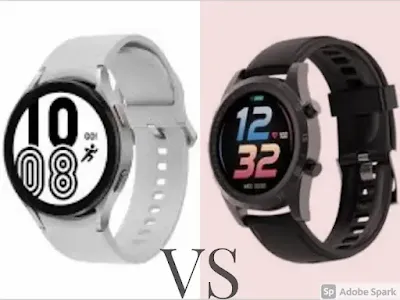
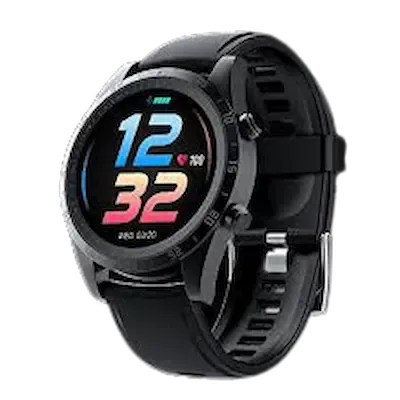
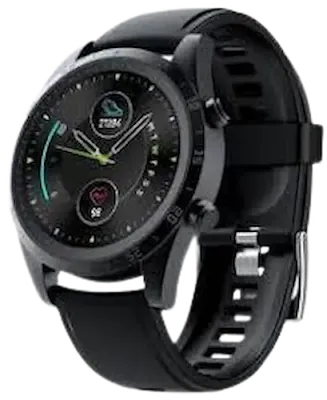
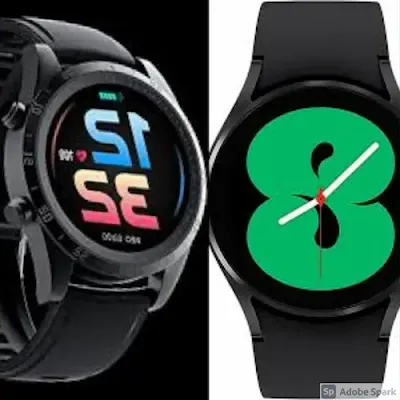
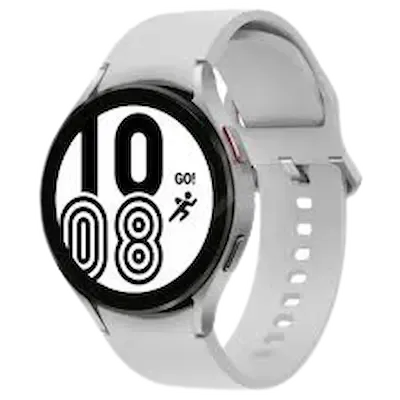







0 Comments